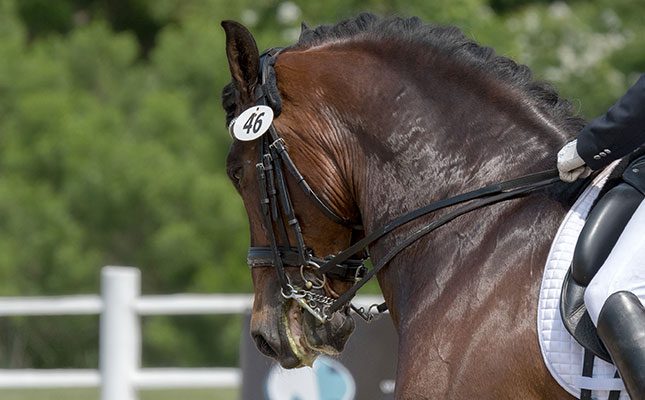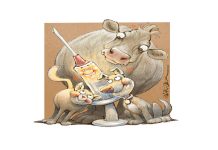
Photo: Wikimedia Commons
Parade and cavalry horses are often ridden by new recruits and the tightness of the noseband, except in the British cavalry, is not always well monitored.
A recent scientific publication that has highlighted tissue and bony changes resulting from the use of nosebands in cavalry horses shows the importance of fitting nosebands correctly.
READ How to properly fit a bridle on your horse and donkey
My question is, should we be using nosebands at all?
To answer this question it is perhaps a good idea to look at the bony and fleshy structures below the skin in a horse’s head.
The nostrils of a horse are fleshy and their only support is two thin nasal bones. The upper palate is covered by gums.
The tongue, which lies between the teeth, is actually a muscle, topped by a furry membrane. Below, on each side, are salivary glands.
The bottom jawbones are relatively slender and narrow in the front part of the face, where the noseband presses. These are the structures that can be compressed and injured when using a tight noseband.
Nosebands are obligatory in the disciplines of Thoroughbred flat racing, polo, show jumping, dressage and equitation. They are also traditionally used for cavalry and parade horses.
There are several different types of nosebands.
Two fingers’ width
The simple or basic noseband is called a cavesson. Traditionally, it is fitted two fingers’ width below the cheekbone and should be no tighter than the space of two fingers, around the jaw.
The chief function of a well-fitted noseband is to keep the mouth closed and make sure that the bit lies in the correct position over the tongue of the horse.
Competitive dressage riders and show jumpers often use a drop nose band as well, to make sure the bit is in exactly the right place.
Over the past few years there have been many unpleasant photos distributed on the Internet showing how tight the noseband has been pulled on winners in dressage classes.
The International Equestrian Federation also allows the use of a double bridle, with both a snaffle and bit. When using double bridles, a cavesson noseband is essential.
Bitless bridles
So-called bitless bridles use a noseband instead of a bit to control a riding horse. Different types of nosebands are used.
This is considered to be less cruel to horses than the use of a bit. However, the so-called ‘crank noseband’ can exert severe pressure on the nasal and jaw bones of a horse, particularly if it is ridden by a novice who uses the reins for balance. Nosebands are not used in Western riding.
American bridles
American bridles are not fitted with a noseband and the type and fit of the bit are considered more important.
American bits are fitted to long, loose reins and the horse is steered by the way the rider positions themselves in the saddle.
When a rider wants to turn left, they turn their shoulders and head slightly to the left and put their weight into the left stirrup.
If they want to stop, they sit down in the saddle, with their heels down in the stirrups and feet slightly forward.
The reins are lifted slightly to bring the horse’s head and neck up. After roping a steer, the rope is twisted around the pommel.
The cow-horse mirrors the movement of its rider, lifting its head and sitting on its quarters in a sliding stop.
The horse then maintains the pressure on the rope while the cowboy leaps off to deal with the steer.












